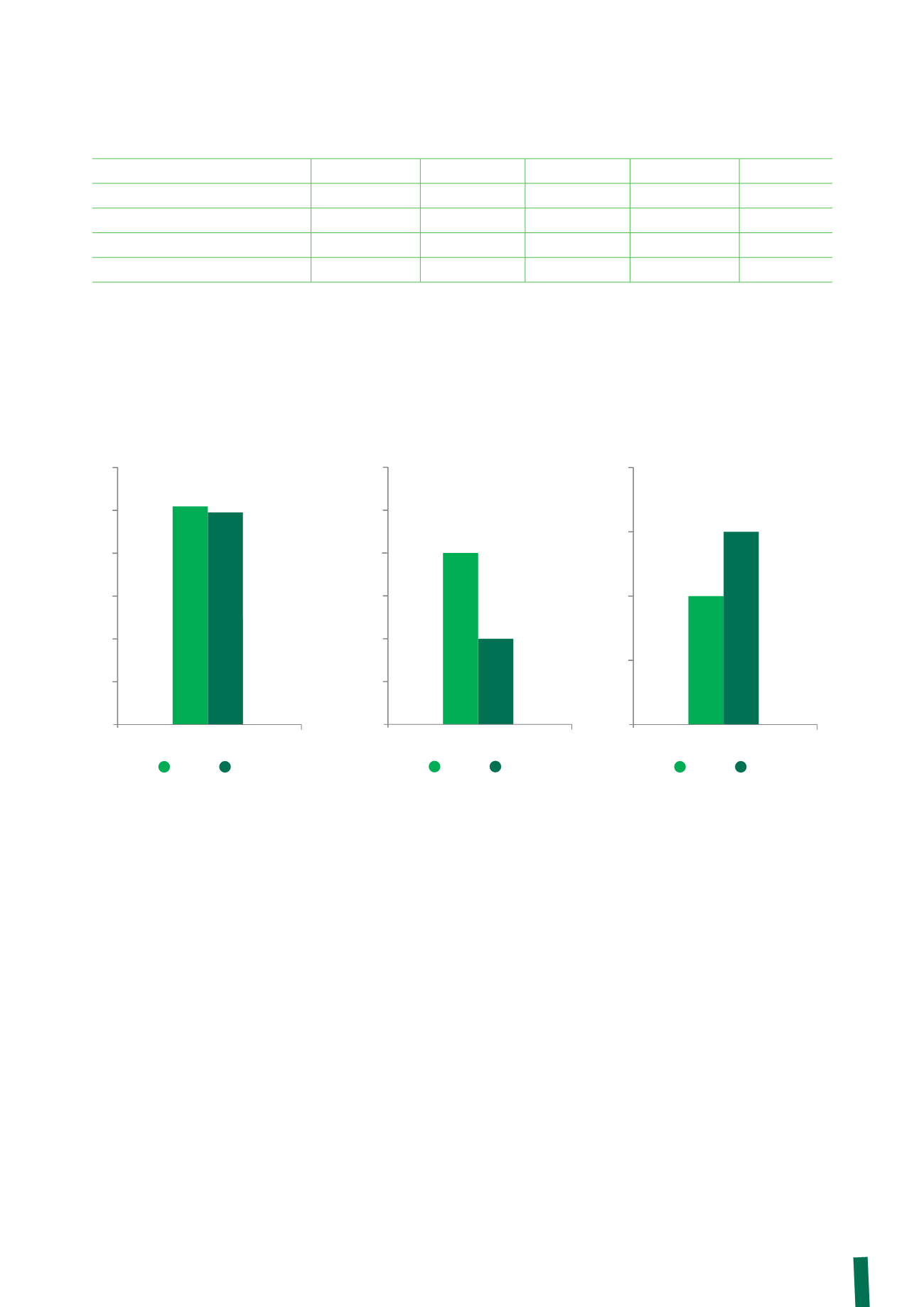
75
(5) The unit of production data for 2012 and 2013 is not compatible for the optical fibre category, since the method of calculating total production has changed.
Water consumption per unit of production is detailed below for the following categories: energy cables, telecom cables and
optical fibre.
6
5
4
3
2
1
0
4.96
Water consumption per
tonne of product (m
3
/km)
4
5.25
2012
2013
Power Cables
0.030
0.025
0.020
0.015
0.010
0.005
0.000
0.01
Water consumption
per Kilometer of product (m
3
/km)
0.02
2012
2013
Telecom Cables
0.04
0.03
0.02
0.01
0.00
0.03
Water consumption per
kilometer of product (m
3
/km)
5
0.02
2012
2013
Optical fibre
Water consumption in 2013, analysed by source [m
3
]
Source
power cables
telecom cables
accessories
optical fibre
group
Water from wells
4,213,813
150,105
846,314
5,210,232
Water from public water main
1,202,277
141,596
21,970
211,092
1,576,935
Water from other sources
608,775
7
183,818
792,600
total
6,024,865
291,708
205,788
1,057,406
7,579,767
Water consumption by the power cables category has fallen
in absolute terms (-15%) and per tonne of production (-5%).
Various improvements contributed to this outcome, including:
• replacement of old, leaking pipes (Baoying)
• installation of closed circuits for the recycling of water used
in processing (Ascoli, Merlino, Rybynsk)
• improvement of the bacterial treatment of recycled cooling
waters, thus extending their useful life and reducing the
need to replace them (Abbeville)
• installation of regulators to control the flow of cooling
waters (Amfreville)
The following factors should also be noted:
• changes in the type of product, with consequent scrapping
of production lines that consume larger quantities of water;
• fluctuations in the volume of rainfall, which is gathered by
some factories for use in processing;
• closure of the Eschweiler factory.
The consumption of water by the telecom cables category was
significantly lower in 2013 than in the prior year. Specifically,
total consumption fell by 53%, while consumption per km of
production decreased by about 46%.
The improvements contributing to this outcome included the
repairs made to eliminate leakage from water recycling plants
and - at the Slatina telecom factory - the greater attention
paid to the “day by day” management of water consumption.
In addition, a telecom factory in Italy was closed during 2013.
This factory, which previously contributed considerably to the
total consumption of water, remained active for six months of
2012.
The absolute amount of water consumed by the optical fibre
category was essentially stable (+0.8%).


